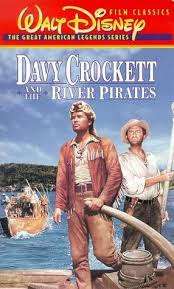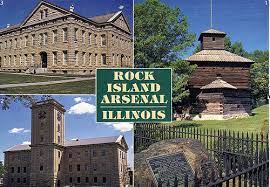The New Madrid Earthquake of 1811 -- The area known as New Madrid was, in 1811, a ways upriver and was sparsely populated. After the Revolution, people were flocking west, crossing the Appalachian Mountains, but blessedly there were few settlers in the New Madrid area in 1811. So what happened?
On 16 December 1811, at 2:15 am, not one but THREE magnitude 8.0 or higher shook the area in that one day. In January 1812, there was another big shake, followed in February by a last 8.8 shock. Church bells rang as far away as Charleston, South Carolina, and Boston. These four big quakes in a three month period happened because “a seam between two plates pulled apart,” explained our presenter. “And the quakes continue to today…. There have been 4000 quakes recorded since 1974! And if and when another big one comes, the entire Midwest will be in big trouble,” he mused.
The Sultana disaster of 1865 -- In the early morning hours of 27 April 1865, mere days after the end of the Civil War, the side-wheeled steamboat Sultana burst into flames, taking 1169 people….mostly Union soldiers (newly freed from Anderson Prison in Georgia) returning home. This was the worst maritime disaster in U.S. history. So what happened?
The ragged band of paroled Union soldiers was taken by train from Andersonville to Vicksburg, Mississippi. There, the steamboat Sultana was to take them north and home. The Sultana was moored there in Vicksburg needing to replace a faulty/leaking boiler. The captain was offered a bounty (bribe!) for each man he would take upriver so he ordered the ailing boiler to be patched up and loaded up the men. Built to take 375 passengers and crew, the wooden Sultana had regularly ferried cotton between St.Louis and New Orleans; she was only two years old. The greedy captain (sorry, called it what it was) loaded nearly 2130 souls on board and pushed off into the river. (1953 freed prisoners, 22 guards, 70 fare-paying passengers and 85 crew.) The Sultana spent two days pushing upriver against the worst spring floods in the river’s history. At around 2:00am on 27 April 1865, when the ship was about seven miles north of Memphis, three of its four boilers suddenly exploded. (If you want to read all the grizzly details click to Wikipedia.) All in all, some 1169 people perished that dark night. “Greed killed them all,” our presenter opined. “And no charges were ever filed against anyone.”
The Flood of 1927 -- The third worst disaster was the Flood of 1927. Aaron taught us: “That year, we learned the hard way that men had to live with the Mississippi River on her terms. The river drains 40% of the American heartland and as many smaller rivers flow into the Mississippi, the river becomes like a great big funnel and that year, 1927, after heavy spring rains, the “funnel” opened flooding 27,000 square miles.” This was the most destructive river flood in U.S. history. All those miles of land were inundated up to 30 FEET deep over the course of several months in early 1927. About 500 people died and over 630,000 were directly affected. Some 200,000 African Americans were hit hardest; they were poor and unable to pick up and leave in contrast with the “richer white folks” many of whom could and did pick up and leave.
Levees along the Mississippi were recognized as needed by the 1820s and work was begun to construct them. Long story short, in the early years they were not properly constructed and continually were breached or broken by the tremendously rushing flood waters. Floods still happen today despite much better engineering.
Any of you, dear readers, have an ancestor who was involved or impacted by one of these disasters?





















